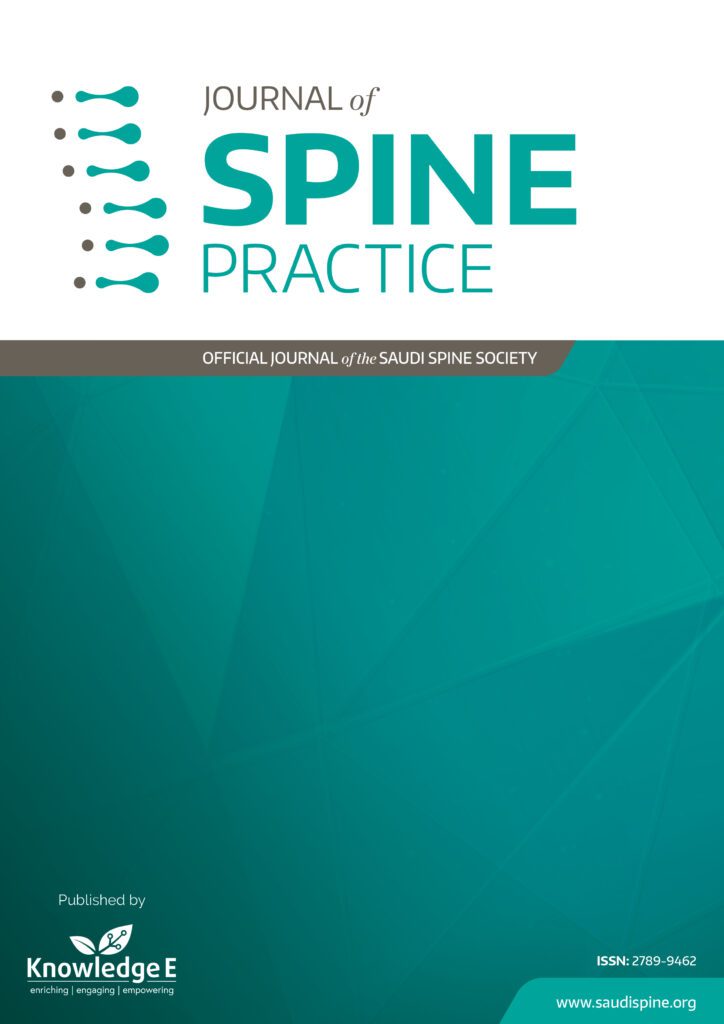
Journal of Spine Practice
ISSN: 2789-9462
Leading research in all spine subspecialties focusing on orthopaedic spine, neurosurgery, radiology, and pain management.
Effect of Magnesium Sulfate on the Total Anesthetic and Analgesic Requirements in Neurosurgery
Published date: Nov 07 2021
Journal Title: Journal of Spine Practice
Issue title: Journal of Spine Practice (JSP): Volume 1, Issue 1
Pages: 27 - 28
Authors:
Abstract:
Introduction: The intraoperative anesthetic and postoperative analgesic requirements are of great importance especially in neurosurgical anesthesia. This requires balancing a deep and effective anesthesia and postoperative analgesia versus the risks of delayed recovery and postoperative respiratory depression from excessive analgesics. Magnesium sulfate is an antagonist of the N-Methyl-D-Aspartate (NMDA) receptors in a voltage-dependent fashion. Propofol also inhibits the NMDA subtype of the glutamate receptor. Therefore, magnesium sulfate when coadministered with propofol potentiates anesthetic effect and NMDA antagonism of propofol. Majority of the studies that evaluated the anesthetic and analgesic requirement in patients receiving magnesium sulfate depended on the clinical parameters, for example, hemodynamic parameters and measurement of pain scores. In this study, we added bispectral index (BIS) and neuromuscular monitoring using train-of-four (TOF) to adjust intraoperative anesthetic requirements in addition to the clinical parameters.
Methodology: This randomized controlled double-blind study included 50 adult ASA I and II male and female patients undergoing neurosurgical maneuvers. Patients were randomly divided into two equal groups. Routine intraoperative monitoring including invasive BP and in addition TOF and BIS were applied. In a blind fashion, patient in group I (Magnesium group) received magnesium sulfate 20 mg/kg as bolus dose over 5 min followed by 0.1 ml/kg/hr of 10% solution as infusion, while patient in group II (Control group) received saline with the same bolus and infusion rates after the induction of anesthesia. Anesthesia was induced in both groups by fentanyl 2 µg/kg, propofol 1.5–2 mg/kg, and rocuronium in a dose of 0.6 mg/kg to facilitate ETT insertion. This is followed by continuous infusion of propofol 6–10 mg/kg/hr and fentanyl 1–2 mic/kg/hr. The parameters which were assessed included hemodynamic parameters (HR and BP), TOF, and BIS. Total consumptions of propofol, fentanyl, rocuronium, and postoperative analgesic requirements (PCA morphine) were recorded. In addition, recovery time and postoperative pain score by visual analog scale (VAS) were recorded.
Result: There was no significant difference in patient characteristics between the two groups. As regard the hemodynamic changes and BIS, no significant difference was seen between the two groups except the HR change which was significantly reduced (p = 0.005) with surgical stimulation in group I compared to the other group. Results also showed that the mean fentanyl, propofol, and rocuronium consumption, recovery time, degree of postoperative pain, and postoperative analgesic requirements were significantly less in patients that received magnesium sulfate infusion compared to those in the control group.
Conclusion: Magnesium sulfate is most likely a safe and cost-effective supplement to the general anesthesia in neurosurgery as it reduces the total anesthetic and analgesic requirements and postoperative pain.
References: